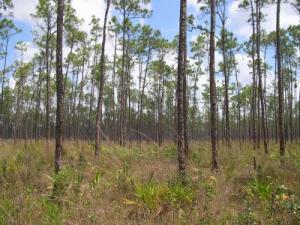As part of President Obama’s America’s Great Outdoors initiative, Secretary of the Interior Ken Salazar today accepted the first donation of land in south-central Florida to officially establish the Everglades Headwaters National Wildlife Refuge and Conservation Area – conserving one of the last remaining grassland and longleaf pine savanna landscapes in eastern North America.

The new refuge and conservation area – the 556th unit of the National Wildlife Refuge System – is being established with the support of local ranchers, farmers and landowners who are working cooperatively with Interior and the U.S. Fish and Wildlife Service to conserve the wildlife values on their lands while retaining their right to raise livestock or crops, an approach championed by the Obama administration.
If fully realized, the refuge and conservation area will span 150,000 acres north of Lake Okeechobee. Two-thirds of the acreage, or 100,000 acres, will be protected through conservation easements purchased from willing sellers. With easements, private landowners retain ownership of their land, as well as the ability to continue farming or ranching the land. The easements would ensure the land could not be subdivided or developed.
“This is an outstanding example of the 21st century approach to conservation envisioned by President Obama when he unveiled his America’s Great Outdoors initiative last year,” Salazar said. “Working in close partnership with landowners, we are taking a major step to safeguard the long-term health of the Everglades in the Kissimmee Valley, while ensuring the area’s ranching and farming heritage and economy remain strong. Just as we have done in Kansas, Montana and the Dakotas, our locally-driven, cooperative approach to conserving the Everglades Headwaters will help grow a robust outdoor recreation economy for central Florida, while preserving ranchers’ rights to live off the land.”
The U.S. Fish and Wildlife Service (Service), which manages the National Wildlife Refuge System, is working closely with ranchers and other private landowners, the Florida Fish and Wildlife Conservation Commission and other state agencies, conservation organizations, users’ groups, Native American tribes and federal agencies in the creation of the new refuge and conservation area.
“We are inspired by the excellent conservation opportunities that exist here as a result of the efforts of our ranching community to protect working lands across generations,” said Service Director Dan Ashe. “The extraordinary vision of our many partners will help protect significant wildlife species while supporting a way of life that is vital to our citizens. This effort will restore wetlands in the headwaters area, preserve working ranches, and support a healthy environment for central and south Florida, as well as increase opportunities to hunt, fish, hike, bird watch, and learn about the importance of this landscape.”
The establishment of the new refuge and conservation area is one of a series of conservation projects under the Obama administration to work locally with landowners, conservation stakeholders, and state, tribal and local governments to conserve vital habitat on working landscapes. These include:
-The million-acre Flint Hills Legacy Conservation Area in Kansas – the first new unit of the National Wildlife Refuge System authorized under the Obama administration, which will help maintain the integrity of tallgrass prairie wildlife habitat, stream water quality and the agricultural heritage of the Flint Hills;
-The proposed Dakota Grassland Conservation Area, which will conserve prairie landscapes, wildlife resources and working lands in the Prairie Pothole Region, an area that supports more than half of the nation’s migratory waterfowl; and
-The successful community-based conservation initiatives taking place in the Crown of the Continent, a vast and intact landscape that includes portions of northwestern Montana as well as British Columbia and Alberta.
The Everglades, which receives water from the Kissimmee River Valley, will benefit from the conservation and restoration of its headwaters through enhanced water quality, quantity and storage.
The U.S. Fish and Wildlife Service held six public meetings in 2011 to gather input on the proposal; collected written comments; and met with representatives of local, state and federal agencies, as well as Native American tribes.
Salazar announced the Service’s intent to evaluate this area in January 2011 and proposed to establish the new refuge and conservation area last September. During 2011, the Service received more than 40,000 comments on the proposal, the overwhelming majority of which expressed support.
Additional details on the Everglades Headwaters National Wildlife Refuge and Conservation Area are available here.


